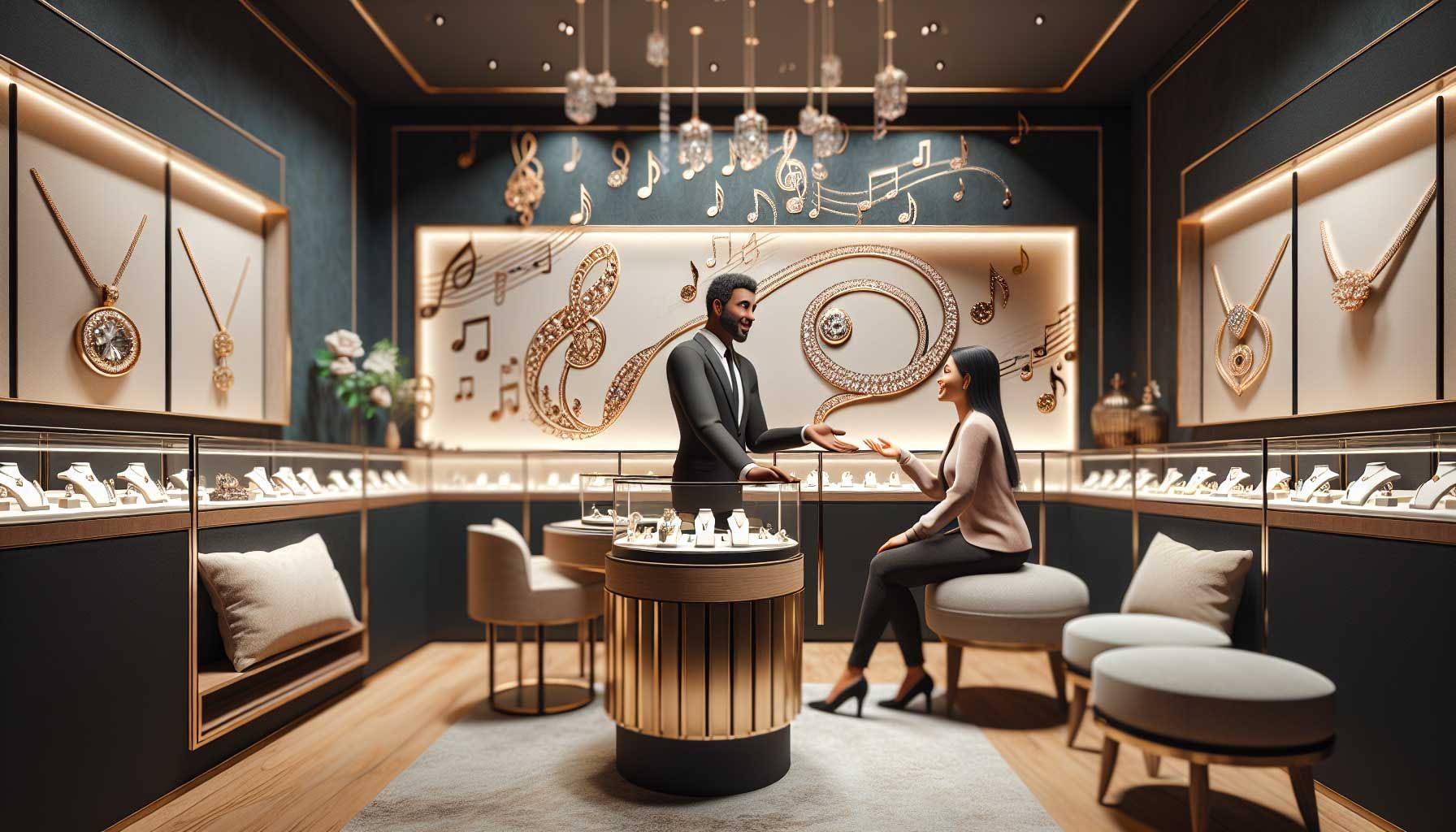How do you use positive language in a sales conversation as a jeweler?
How to Use Positive Language in a Sales Conversation
As a jeweler, it is essential to build a strong bond with your customers. This can largely be achieved through the use of positive language in your sales conversations. It not only influences the way customers perceive your products but also their overall experience in your store. In this article, you will discover how to effectively use positive language, with data-driven insights and practical tips.
What is Positive Language and Why is it Important?
Positive language refers to the use of words and phrases that are constructive and optimistic. This helps to create an atmosphere of trust and satisfaction. In sales conversations, the impact of your words is greater than you might think.
Research shows that customers are more likely to make a purchase when they feel good during the conversation. A study by Harvard Business Review states that 95% of people base their purchasing decisions on emotions. By using positive language, you strengthen this emotional connection.
Pro tip: Start every conversation with an authentic compliment about the customer or their style. This immediately creates a positive atmosphere.The Power of Positive Sentences
The sentences you choose can make a difference. Instead of phrases that have negative connotations, such as "This is not in our collection," you could say: "We have a beautiful selection that suits you!" This shifts the focus to the possibilities.
Positive sentences have the power to influence emotions. They help create a sense of excitement and interest among customers. By making the customer feel unique, you can increase the likelihood of a sale.
Pro tip: Create a list of 10 positive sentences that you can use in conversations. Practice these regularly.Listening and Responding with Positive Language
Active listening is a crucial component of an effective sales conversation. When a customer shares something, such as their wishes or concerns, it is important to respond with positive language. It not only makes the customer happy, but it also ensures that they feel heard.
For example, if a customer says: "I find it difficult to make a choice," you could respond with: "I understand that. Let me help you find the perfect choice that suits you." This makes the customer feel supported in their decision.
Pro tip: Use the words "I understand you" often in your responses. This shows empathy and fosters connection.Positive Body Language and Attitude
While the focus is on language, you must also pay attention to your body language and attitude. A positive attitude enhances the impact of the words you use. A friendly smile, open body posture, and eye contact are essential.
Research shows that non-verbal communication accounts for 93% of the impact of your message. Customers are likely to see you as approachable and trustworthy if your body language matches your words.
Pro tip: Practice your body language in front of a mirror so you become aware of your expression and posture.The Importance of Constructive Feedback
During a sales conversation, it is inevitable that you will give feedback. Make sure that this feedback is always constructive. Instead of saying: "That piece of jewelry doesn't suit you," you might say: "What do you think of this beautiful piece that highlights the colors of your eyes?" This offers an alternative solution and keeps things positive.
Offering options or alternatives reduces the chances of customers feeling disappointed. This promotes a positive experience and increases the likelihood of repeat purchases.
Pro tip: Use the sandwich method. Start and end with positive feedback and place the constructive criticism in the middle.Why Customer Orientation is Crucial
When using positive language, you must be customer-oriented. This means you should tailor your words and sentences to meet the specific needs and wants of the customer. By showing empathy and understanding, you can use positive language more effectively.
Customer orientation can significantly increase sales. A study by Accenture showed that 65% of consumers base their purchasing decisions on customer experiences, where positive language is a crucial component.
Pro tip: Ask open questions to your customers to understand their specific needs before making recommendations.Neutral Terms to Avoid
An effective way to use positive language is by avoiding neutral or negative terms. Words like "try," "maybe," or "no guarantee" can create a sense of uncertainty. Instead, use strong and confident statements.
Remember that word skepticism among customers can lead to a missed sale. By simplifying your language and focusing on strong assertions, you will feel more confident. This gives the customer the same confidence in their decision.
Pro tip: Replace "we will try" with "we will definitely take care of this for you" to instill more confidence in the customer.Creating a Positive Atmosphere in the Store
In addition to the language you use, the overall atmosphere of your store is also important. Ensure that your store is an inviting and positive environment. This includes everything from music selection to store layout.
A study by Oxford University shows that a positive shopping environment increases customer satisfaction by 20%. This makes it more likely that customers will stay longer, view more products, and ultimately buy more.
Pro tip: Implement the right lighting and music to create the desired atmosphere. This will enhance the overall experience for the customer.Sharing Testimonials and Positive Stories
Sharing customer stories and testimonials is a powerful way to integrate positive language into your sales conversations. When customers hear how others have experienced a product, it can increase their trust and encourage them to make the purchase.
According to a study by Nielsen, 92% of consumers trust recommendations from friends and family over advertising. By sharing this experience, you reflect positive language and create a sense of community and belonging.
Pro tip: Regularly collect customer reviews and evaluate them for use in future sales conversations.Using Social Proof
Social proof is a psychological phenomenon where people consider the actions of others as a guide for their own behavior. By highlighting the positive experiences of other customers, you influence the perception of your products.
By communicating positively about the popularity of certain styles or collections, you create a sense of urgency and exclusivity. It shows customers that others have already had a positive experience, which can encourage them to buy as well.
Pro tip: Use Instagram or Facebook to share photos of satisfied customers wearing your products. This enhances social proof and creates a positive association.Adapting to Different Customer Psychologies
Every customer is unique and has different preferences and styles. Some customers are more sensitive to emotional approaches, while others make a more rational assessment. By adjusting your language to the personality of your customer, you show that you understand them.
A study from the Journal of Consumer Research shows that customers who feel emotionally connected to a seller are half as likely to be dissatisfied. This emphasizes the power of tailoring your language to the customer.
Pro tip: Observe your customers' reactions to your questions and adjust your communication based on their expression and behavior.Conclusion
Using positive language in a sales conversation is not only a skill but an art that can be mastered well. By implementing the above strategies and tips, you not only make the sales experience more enjoyable for your customers but also for yourself as a jeweler.
Positive language has a direct impact on customer satisfaction and can help you achieve more sales. Start applying these techniques today and observe the transformation in your sales conversations. Make every interaction an opportunity to positively influence the customer!

Take your store to the next level
Start automating and digitizing your store processes today. PrismaNote helps retailers with this. Discover what we can do for you via the menu above.
- George




















































